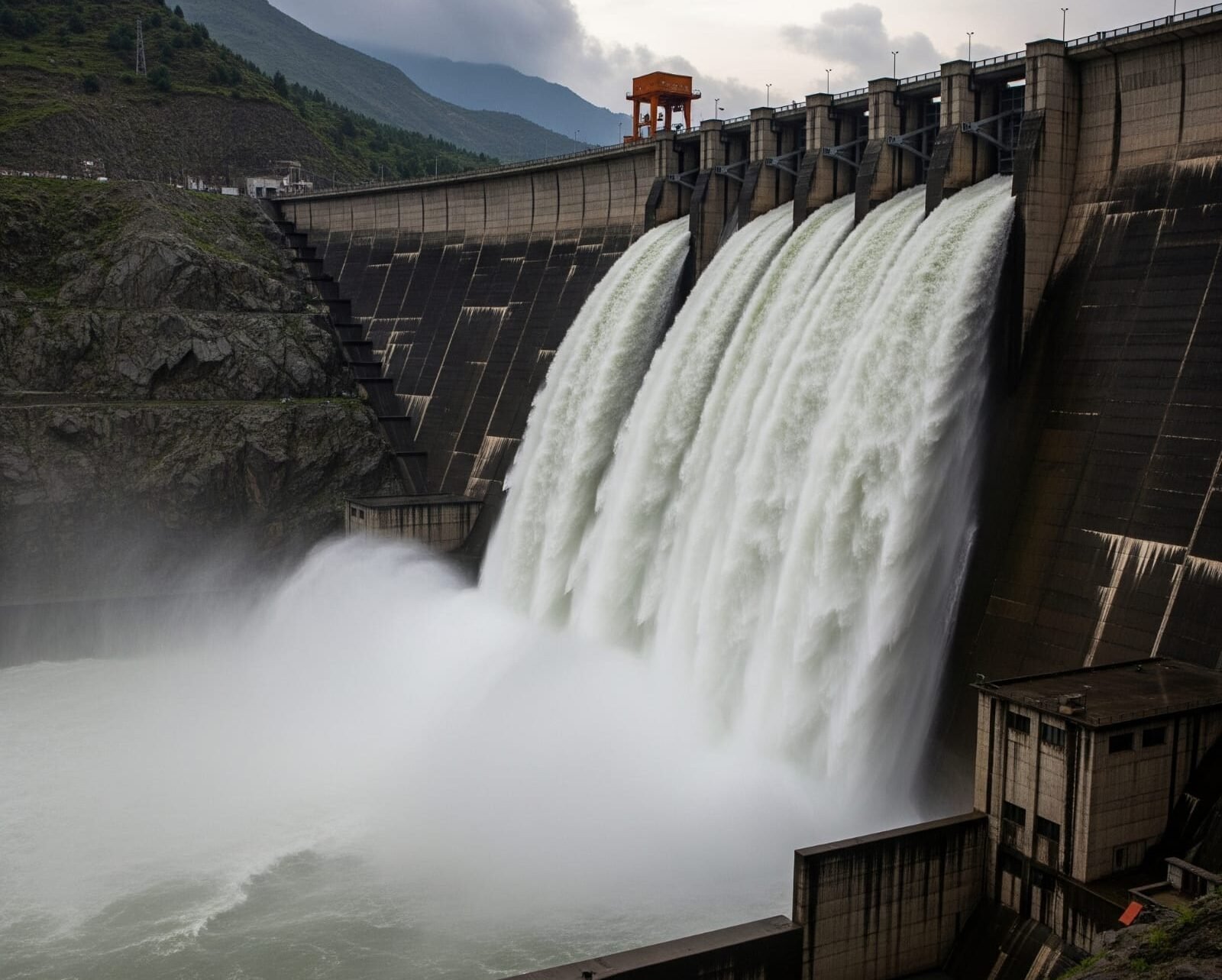A Tense Situation Unfolds as Tarbela Dam Hits Full Capacity
Pakistan’s Tarbela Dam, one of the world’s largest earth-filled dams, has reached its maximum capacity, sparking a Tarbela Dam alert that’s put downstream communities on edge. On August 27, 2025, authorities confirmed the dam’s water level hit 1,550 feet, triggering the opening of spillways to release excess water. The Tarbela Dam warning, issued by the Provincial Disaster Management Authority (PDMA) of Khyber Pakhtunkhwa, has residents in districts like Nowshera, Swabi, and Haripur bracing for potential flooding. With heavy monsoon rains continuing, the situation is critical.
The Tarbela Dam alert has sent ripples of concern through Pakistan, with social media buzzing as people share updates and safety tips. From fishermen to families living along the Indus River, everyone’s on high alert. Here’s the full scoop on the Tarbela Dam crisis, its impact, and what’s next for those in its path.
What’s Behind the Tarbela Dam Flood Crisis?
The Tarbela Dam scare stems from relentless monsoon rains pounding Pakistan’s northern regions since mid-August 2025. The Indus River, fed by snowmelt from the Himalayas and heavy rainfall, has pushed Tarbela Dam to its limit, with water levels touching 1,550 feet. To prevent overflow, authorities opened the spillways on August 25 at 8:00 AM, releasing up to 250,000 cusecs of water. This has raised fears of flooding in downstream areas along the Indus River.
READ NEXT: Shaheen Afridi son Heartwarming Celebration Aliyaar Turns One!
The Tarbela Dam risk was amplified by earlier spillway openings in July 2025, when water flows reached 259,000–270,000 cusecs, causing medium-level floods. The PDMA issued alerts for Nowshera, Swabi, and Haripur, urging residents to avoid riverbanks and move livestock to safety, per dawn.com. The National Disaster Management Authority (NDMA) warned that ongoing rains from August 27 to 28 could further elevate water levels in the Indus and Kabul rivers, per southasiandesk.com. This has put the Tarbela Dam crisis in sharp focus.
Why This Matters
The Tarbela Dam alert is a big deal for communities downstream. Tarbela Dam, located in Haripur Tehsil, Khyber Pakhtunkhwa, is vital for irrigation, flood control, and generating 4,888 MW of electricity, with plans to expand to 6,418 MWg. But when it hits full capacity, the spillway releases can flood low-lying areas, threatening thousands of villages along the Indus River, where fishing and farming are key livelihoods, per dawn.com. The Tarbela Dam warning has prompted emergency measures, with local administrations on high alert to prevent loss of life and property.
The impact is already visible. In July 2025, a similar release caused medium-level flooding, and five people were rescued near Hund after being trapped by rising waters. The Tarbela Dam crisis has disrupted daily life, with warnings to fishermen, livestock herders, and tourists to stay clear of riverbanks,. The PDMA’s emergency helpline (1700) is active, and evacuation plans are ready, highlighting the seriousness of the Tarbela Dam threat.
Public Reaction and Social Media Buzz
The Tarbela Dam alert has set social media ablaze. On August 26, 2025, X posts from Pakistan showed residents sharing concerns, with one user writing, “Tarbela’s full—stay safe, everyone!” Another posted, “Flood warnings again? This is scary for downstream villages,” per posts on X. Some praised the PDMA’s quick response, with an X user noting, “Good to see alerts in time, but we need better flood planning.” Others expressed frustration, recalling the recurring flooding issues during monsoon seasons.
The Tarbela Dam crisis has also drawn attention from local leaders. Khyber Pakhtunkhwa’s PDMA has been proactive, directing district administrations to keep communities informed, per dawn.com. Social media clips of past floods near Tarbela have resurfaced, amplifying fears but also spreading awareness about safety measures. The Tarbela Dam alert has united communities in vigilance, with hashtags like #TarbelaFlood trending briefly in Pakistan, per posts on X.
Challenges in Managing the Crisis
The Tarbela Dam situation poses huge challenges. The dam’s spillways, with a combined discharge capacity of over 650,000 cusecs, often release water that can’t be used for hydropower, overwhelming downstream areas, per en.wikipedia.org. The NDMA warned that flows of 250,000 cusecs could cause low to medium flooding in the Indus River and its tributaries. This puts pressure on local authorities in Swabi, Nowshera, and Haripur to coordinate evacuations and monitor water levels.
For residents, the Tarbela Dam alert means constant worry. Many rely on the Indus for fishing and farming, and flood warnings disrupt their livelihoods, per dawn.com. The lack of permanent flood defenses in some areas, combined with silt buildup reducing Tarbela’s storage capacity to 6.8 million acre-feet from 11.6 million, complicates management. The Tarbela Dam crisis also strains rescue teams, with the NDMA and local administrations stretched thin as they prepare for potential disasters.
Signs of Hope Amid the Tension
Despite the Tarbela Dam scare, efforts to manage the crisis are underway. The PDMA has deployed monitoring teams and issued clear warnings, urging residents to stay vigilant and avoid water bodies. In July 2025, Rescue 1122 in Swabi saved five people trapped near Hund, using boats and safety gear, per tribune.com.pk. Similar preparations are in place now, with emergency units on standby. These efforts show a commitment to minimizing the Tarbela Dam impact.
The NDMA’s National Emergencies Operation Centre (NEOC) is also forecasting rain patterns to guide response efforts. Community cooperation is strong, with locals heeding warnings and moving to safer areas, per samaa.tv. The Tarbela Dam crisis, while daunting, is being met with proactive measures, offering hope that damages can be contained.
What’s Next for Downstream Communities?
The Tarbela Dam alert remains active, with spillway releases expected to continue as rains persist through August 28, 2025. The NDMA warns that the Indus and Kabul rivers could see low to medium flooding, and residents in Nowshera, Swabi, and Haripur are urged to stay alert, per southasiandesk.com. The PDMA’s helpline (1700) is available for emergencies, and local administrations are monitoring the situation closely.
For now, the Tarbela Dam crisis demands caution. Families are advised to follow official updates from the PDMA and NDMA, avoid riverbanks, and prepare for possible evacuations As Pakistan navigates this Tarbela Dam challenge, the resilience of downstream communities and the efforts of authorities will be key. Stay tuned for updates on this unfolding situation.



